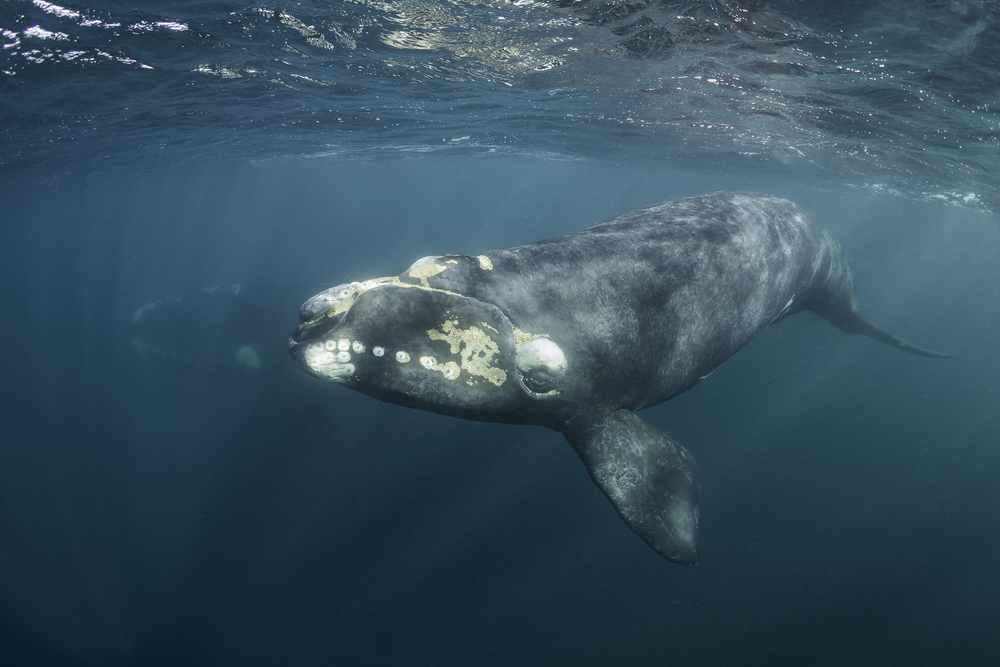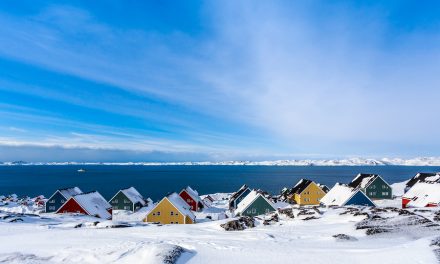The increasingly rare North Atlantic right whale is in danger, and its fate has always been left to humans. These lovely creatures have been hunted almost to the brink of extinction, and their popluation is declining sharply again. Immediate action is required if they are to have ANY hope for survival.
Nonprofit ocean defense group Oceana, said in a recent report that unless protections are put into action NOW, the North Atlantic free whale will die. The researchers wrote:
“At some point, if the trend continues, recovery will simply be impossible.“1
RELATED STORY:
Only 400 whales remain, and less than 25 percent are breeding females, which are responsible for the survival of the species. Whitney Webber, Oceana campaign director, told CNN that least 28 have died in the last two years. The report says that its sudden decline is the result of fishing, navigation and climate change that affects its food supply. Webber added:
“We don’t really see whales die for natural causes anymore. They are dying in our hands.“1
They are named “right whale” because they were once the “right whale” to hunt due to the fact that they swim near the shore and float to the surface when they are killed.
The were hunted to near extinction when whaling was banned in 1935. Then, sadly, in the last decades, the whale found new adversaries. The report states that at least 100 right whales get caught up in vertical fishing lines every year. Fisheries use pots and traps at the bottom of the ocean with vertical lines attached to the buoys so they can lift them. (It is heartbreaking to imagine a whale caught in one of these lines.)
RELATED STORY:
Webber called it a minefield. She said over a million of the lines cross the whale migration routes in the United States and Canada. She added:
The lines are extremely strong to support the weight of the pots and traps, so when the whales get caught in them, they often drag them for months, which slows them down and makes feeding, reproduction and swimming difficult. The line also cuts its meat, causing an infection that could kill them.1
Even though the lines have challenged the whales for years, the last two years have become much more difficult, Webber said:
Since 2017, 8 percent of its population, 28 whales, have died in what the National Oceanic and Atmospheric Administration has described as an “unusual mortality event”.1
Webber said it is likely because their food source (a small plankton called copepods) is fleeing to colder waters further north. Once in Canada, the whales face more water fishing lines and heavier boat traffic, not to mention hundreds of additional miles of travel, which means the search for food is often fatal.
RELATED STORY:
Because the mammal does not reach sexual maturity until ten years of age, these problems aggravate the low birth rate of the whale. And females usually give birth to only one offspring every three to five years. However, according to the report, entanglement stress in fishing nets has extended the period between births to 10 years.
Because there are so few of these majestic whales, researchers maintain a catalog of them. All have numbers, but some, like Punctuation, have names. The team that has studied them for years knows their lineage and has seen the young become parents and, in some cases, grandmothers.
Punctuation, a grandmother whale named for the comma-shaped marks on the back, died in June after a ship hit it, according to the report. She had survived two previous boat collisions and had been caught in fishing lines five times. But, sadly, these wounds were too severe to survive. Her organs began to slide down a 1.8-meter cut on his back.
RELATED STORY:
She had had eight offspring between 1986 and 2016, and two of them had their own offspring. Many of their young died in similar circumstances. The researchers had been following the matriarch for 38 years. Webber said her death was a devastating blow. She added:
“They knew these whales. They are very personal.“1
If things do not change, “functional extinction” of these whales is likely in the coming decades. According to CNN, Oceana’s defenders are working on a proposal to eliminate vertical Atlantic fishing lines, but that process could take years to go through the United States Government, if it gets anywhere.
Meanwhile, the report outlines several suggestions that could improve the number of free whales in the North Atlantic. Two are fundamental: discontinue use of the vertical fishing line and apply speed restrictions in the ocean.1
Webber said that switching out manual vertical lines for something more high-tech, such as an automated system, is still far away. But in the meantime, fisheries can temporarily close the areas where lines are drawn while the whales are in them.
RELATED STORY:
In the United States, many areas with slower speed recommendations are just that – recommendations, not mandatory restrictions. If speed limits are ACTUALLY imposed on the ocean, whale collisions could fall 86 percent, she said, adding:
Watching the whales go extinct would be “horrible, shameful, and every bad word there is.“1 (We agree.)
Every single creature has a role to play in the ecosystem. A healthy ocean ecosystem translates to healthy coastal economies.
Fisheries rely on the abundance of their crops. When a link in the food chain disappears, the loss disrupts the balance of the ecosystem, which alters the size of the population and the presence of predators and natural prey.
If the North Atlantic right whale disappears, the ocean will lose one of its largest and most astonishing whales.












